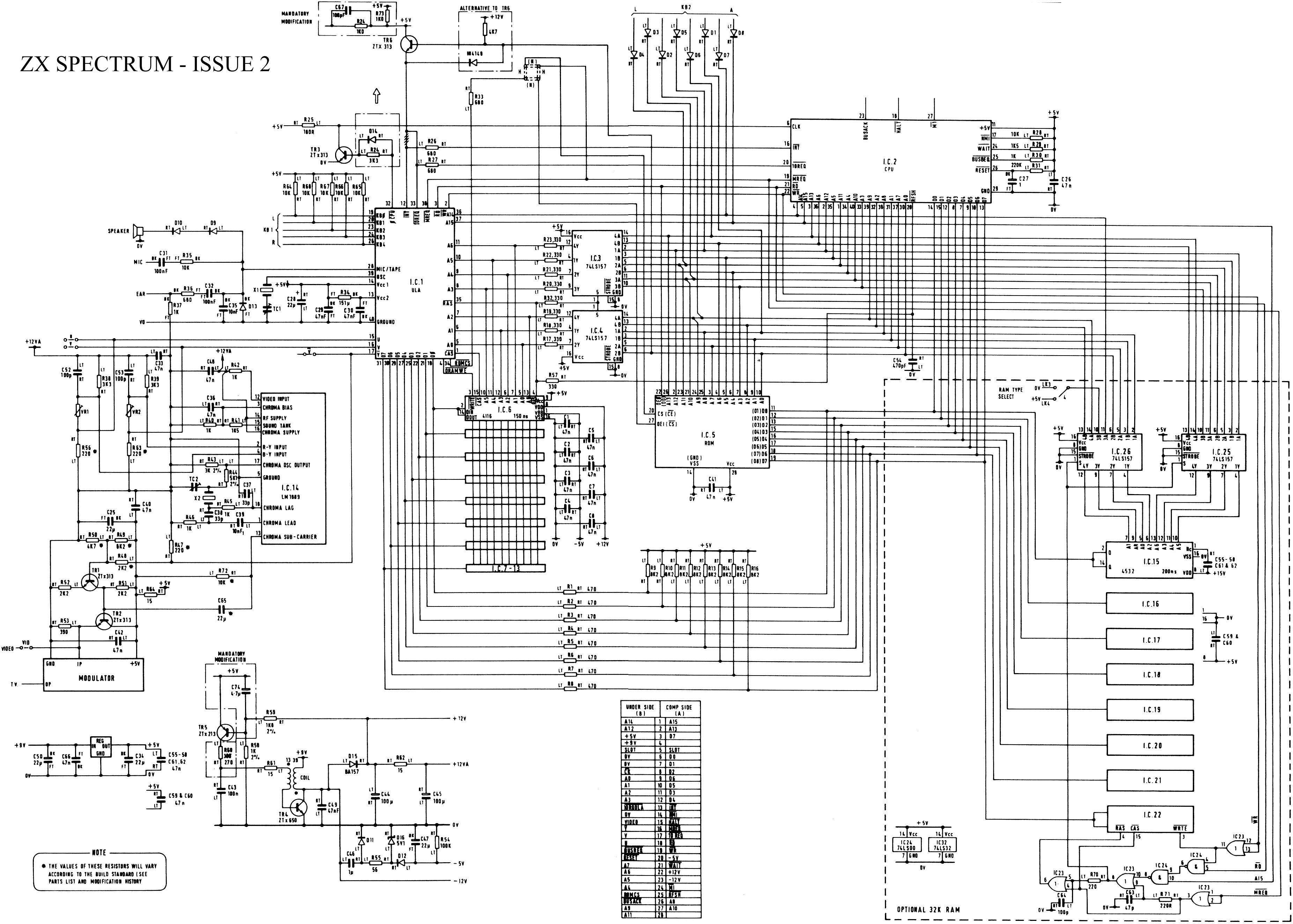This looks great! Thank you and fingers crossed it fits in DIP40 sized PCB!
NOTE, I just realised one issue with my MUX approach combined with ZX Spectrum and frequency multiplier. The clock that is passed to Z80 on ZX Spectrum can be abruptly varying! In "normal" circumstances Z80 gets 3.5 MHz clock (derived from PAL frequency) HOWEVER in case of memory contention between the video (ULA) and CPU - ULA wins and temporarily pauses Z80 clock. I assume that would cause an issue with U8 multiplier, right?
For example see:

See pin 32 from ULA (IC1) feeding into pin 6 of Z80 (IC2).
So, I am thinking, maybe it is better to have 2 clock inputs in TT design - one clock to drive internal Z80 core and another (higher) to drive internal multiplexor? In case of ZX Spectrum higher clock could come directly from 14 MHz crystal oscillator instead of multiplier.
Hi,
Playing around with this a bit, am thinking of doing something like this:
The idea is to be as transparent and true as possible, so I'm taking the input clock and multiplying it by 4 to do the multiplexing.
Initial floorplanning says I might, just might, be able to fit this on a 40 pin DIP that would slot right into place (assuming I get to populate the ASIC top side and the rest underneath).
The MCU is there to setup the project through the TT MUX, and manage timing/latches and such, but would not interfere with anything.
It's still prelim and messy but this look like it would make sense to you?